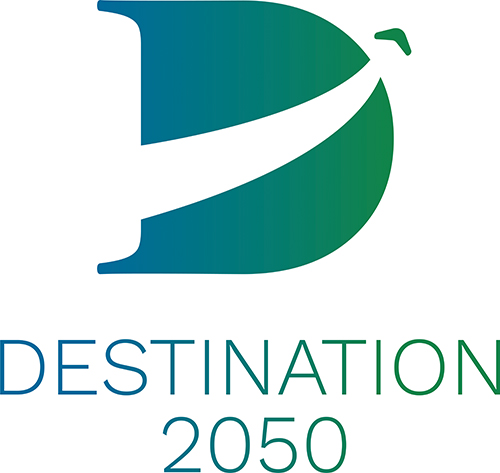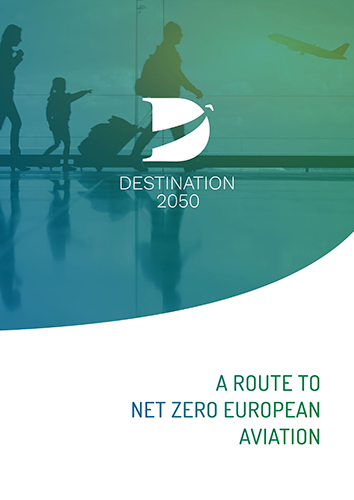By Agata Lyznik
Withdrawing from the Architects Declare commitment last year, Foster and Partners, the renowned British architecture firm founded by the Pritzker-laureate Sir Norman Foster issued an impassioned statement spelling out the basis of their disagreement. Architects Declare, a coalition which was set up two years prior to coordinate climate action in the sector, had called on any members not committed to ending “business as usual” to leave the group. Among others, Sir Norman Foster’s involvement in airport infrastructure projects had come under fire. He countered with a bold appeal to reason:
“We believe that the hallmark of our age, and the future of our globally connected world, is mobility,” Lord Foster said. “Mobility of people, goods and information across boundaries. Only by internationally coordinated action can we confront the issues of global warming and, indeed, future pandemics. Aviation has a vital role to play in this process and will continue to do so. You cannot wind the clock backwards.”
Sir Norman’s words stand out among voices calling for drastic curbs on aviation on the basis of climate impact. The recent rekindling of protests against airport expansion projects in the UK belies attempts to bring the discussion back to identifying the real problem (aviation’s climate impact) and finding adequate solutions.
The pandemic has brought home what we have known all along. Aviation is a global driver of connectivity, economic development and democratisation and it stands to reason that instead of trying to wind the clock backwards, we should be dedicating our time to ridding aviation of the main culprit – carbon emissions. The list of challenges this work entails is sufficient to keep us busy. What are the so-called ‘green premiums’ we need to take into account when weaning air transport off fossil fuels? What kind of technologies should we invest in? Where are the low hanging fruits of decarbonisation? What is the role of each part of the system in bringing about CO2 reductions to the benefit of all?
An unprecedented alliance composed of all sub-sectors of European aviation has come together to tackle all these questions and chart the way forward. Enter Destination 2050, A Route to Net Zero European Aviation.
A journey we can embark on together

Destination 2050 is the first decarbonisation roadmap of its kind on many counts. It confirms first and foremost that net zero can be achieved for all flights within and departing from the EU, EFTA and the UK by 2050.
Destination 2050 is a flagship sustainability initiative launched in February 2021 by five key aviation associations representing the whole European air transport ecosystem. Combining a vision, a roadmap and a set of bold commitments, its aim is to identify the measures that deliver tangible reductions in CO2 and guide their application on the road to full decarbonisation of the sector. By 2050, it envisions a 92% absolute emissions reduction through a combined approach underpinned by three key pillars: new technologies, improved operations and sustainable aviation fuels (SAF), while the remaining 8% is removed from the atmosphere through negative emissions, achieved through natural carbon sinks or dedicated technologies like Carbon Capture and Storage (CCS); their implementation is supported by economic measures.
Initiators Airlines for Europe (A4E), Airports Council International Europe (ACI EUROPE), AeroSpace and Defence Industries Association of Europe (ASD Europe), Civil Air Navigation Services Organisation (CANSO) and European Regions Airline Association (ERA), embarked on this ambitious project back in 2019, working with the expert teams at NLR, the Royal Netherlands Aerospace Centre (bringing in experience from drawing up a decarbonisation roadmap for the Dutch aviation sector) and SEO Amsterdam Economics. They maintained course even when faced with headwinds from the devastating onset of the ongoing pandemic, and its effect has now also been brought into the systemic forecasting.
The world is looking
Destination 2050 is the first decarbonisation roadmap of its kind on many counts. It confirms first and foremost that net zero can be achieved for all flights within and departing from the EU, EFTA and the UK by 2050. Charting a clear pathway for the entire European air transport sector to reach net zero emissions, the roadmap plugs aviation right into the grand climate project undertaken by the present European Commission under the wings of the European Green Deal and the subsequent Climate Law. Going way beyond the global climate goals currently binding the air transport sector, on intra-European flights the roadmap sees net emissions drop by 13MtCO2 in 2030, a 55% reduction as compared to 1990 levels, thereby contributing to the implementation of the European Green Deal in the shorter term as well.
As well as aligning with the overarching drive to transform all parts of the European economy, including transport, it is also the first such regional project to bring together all parts of the sector, with airlines, airports, air navigation service providers and aerospace manufacturers joining forces. To further strengthen the role of the roadmap and show industry’s willingness to play its part to achieve these ambitious goals, the findings of Destination 2050 have been rolled into a set of commitments embraced by all partners.
Finally, a worldwide trailblazer, Destination 2050 sets a precedent for other regions of the world to chart their own paths to net zero and exceed the present goals set globally for the air transport sector. The key to successful climate mitigation is collective action on the global scale, therefore the recommendations flowing from the report delivered by NLR and SEO oblige the governments and policymakers to work together with the industry on the development of the measures it outlines, but also, and more crucially, to jointly work towards a global commitment to a net zero carbon future for aviation. Not least because the European aviation market needs to remain competitive and avoid damage from differentiated policies, carbon leakage and transfer of activity.
One pathway, four solutions

Destination 2050 is a flagship sustainability initiative launched in February 2021 by five key aviation associations representing the whole European air transport ecosystem. Combining a vision, a roadmap and a set of bold commitments, its aim is to identify the measures that deliver tangible reductions in CO2 and guide their application on the road to full decarbonisation of the sector.
Destination 2050 delivers one possible pathway to reach net zero, based on the best of currently available knowledge. It therefore doesn’t exhaust nor prescribe the list of possible ways of achieving it. Looking into the future, especially in such disruptive times for aviation and the economy at large, always entails accepting a wide margin of unknown circumstances. Anything from breakthrough technologies to changing trading conditions can tip the scale in another direction. While these uncertainties remain in place, their presence shouldn’t delay action for either the industry nor the policymakers. In order to make the net zero vision for European aviation by 2050 a reality, substantial investments need to be made now. Governments and policymakers need to set up supportive and future-proof frameworks to create the necessary conditions for the industry to deliver the innovation and the optimisation of operations required to decarbonise. Ensuring a level playing field and facilitating the transition through incentives and reduction of investment risks are paramount to success over the long term.
The four key areas identified by Destination 2050 to fulfil the net zero-carbon promise are: improvements in aircraft and engine technologies, sustainable aviation fuels, smart economic measures and improvements in air traffic management and aircraft operations. Each of them delivers a key slice of emissions reductions on the way to net zero. By the year 2050, these reductions are projected to be:
- -37% from new aircraft and engine technologies
- -34% thanks to deployment of SAF
- -8% through implementation of smart economic measures
- -6% delivered by optimisation of air traffic management.
Additionally, the cost of these measures is likely to have an impact on demand, resulting in an additional reduction of 15%, so as to reach the net zero CO2 goal. Nevertheless, based on the Destination 2050 report, European air passenger numbers are projected to grow on average by approximately 1.4% per year between 2018 and 2050 without compromising the sector’s ability to reach net zero CO2 emissions by this point.
Going it alone not an option
Destination 2050 is a unique opportunity for stakeholders such as EU policymakers and national governments to get onboard with the bold vision of net zero carbon European aviation. With the industry aligned and committed and a clear pathway set out, now the ball is in their court to step up to the challenge and help make this vision a reality. Particularly in the areas that need support through stable financing mechanisms (fostering research and innovation), incentivising further development and deployment (SAF) or creating political momentum (full implementation of Single European Sky), the involvement of decision-makers is a deal-breaker. More than ever, the industry needs institutional support to continue to deliver its benefits to society, while arresting its negative impact on the climate.
To further engage governmental stakeholders, and building on the Roundtable Report on the Recovery of European Aviation from last November, the industry is currently working on an EU Pact for Sustainable Aviation. This document will bring together industry and regulators around a shared vision, common targets and high-level principles on the action needed to enable us to realise our sustainable future.
Learn more and download the full report at www.destination2050.eu.







